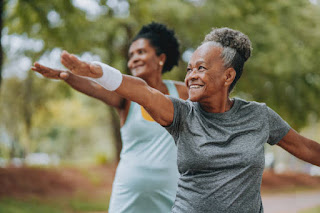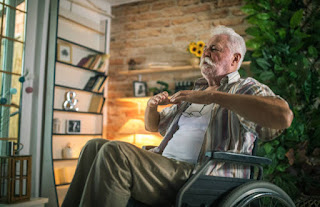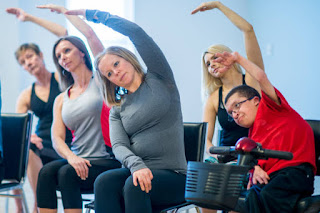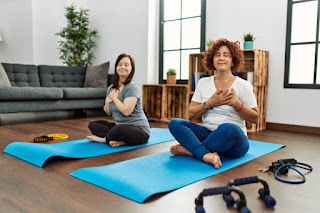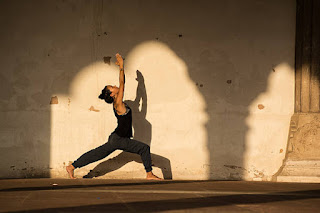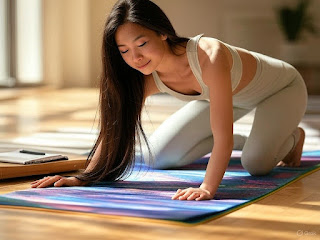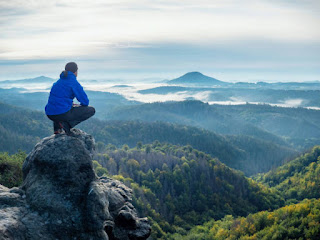Free 6-Week Adaptive Yoga Course: Build Strength & Balance
6-Week Adaptive Yoga Course: Build Strength, Flexibility, and Balance
Welcome to the 6-Week Adaptive Yoga Series, designed to help you start moving, build confidence, and improve your physical and mental well-being. Whether you’re new to yoga, recovering from an injury, or struggling with mobility, this series is for you. Gentle yoga is for everyone, regardless of your physical abilities or limitations, and adaptive yoga ensures that each pose is modified to suit your unique needs. You’ll develop a stronger body and more confidence as you progress through the series.
Over the next six weeks, we’ll dive into a range of yoga practices that focus on breathwork, flexibility, strength, and balance, all with an adaptive approach. Each week’s content will guide you through poses that can be done using props like a chair, a wall, or yoga blocks for extra support. I’ll also provide videos for each week’s sequence so you can see how to perform the poses safely and correctly.
Who is This Series For?
This series is ideal if you:
- Struggle with mobility or joint pain.
- Are recovering from injury or surgery.
- Have limited experience with yoga and want a gentle, guided introduction.
- Seek a restorative, low-impact approach to building strength and flexibility.
Why Adaptive Yoga?
Adaptive yoga is about making yoga accessible to everyone, regardless of physical condition. It modifies traditional poses to accommodate individual limitations while maintaining the benefits of stretching, strengthening, and calming the mind. By using tools like chairs, blocks, straps, and even walls, adaptive yoga makes it possible to perform poses that would otherwise be too challenging. The goal is to meet your body where it is today, helping you move forward, step by step, at your own pace. This practice emphasizes understanding your body’s needs and developing the flexibility to adapt. With time, you’ll learn how to balance effort and ease in each movement.
What You’ll Need for the Series
To fully benefit from this series, it’s helpful to have a few items on hand:
- A sturdy chair for seated and supported poses.
- Yoga blocks or books to support your hands during stretches or poses.
- A yoga strap or a towel for modifying stretches.
- A blanket for added comfort during seated or lying-down poses.
If you don’t have these items, don’t worry. I’ll guide you on how to make modifications using household objects. Each video will show you how to make adjustments, ensuring you’re safe and comfortable throughout your practice.
Series Overview: What We’ll Cover Each Week
Week 1: Introduction to Adaptive Yoga
In the first week, we will introduce the concept of adaptive yoga and go over basic poses that anyone can try, no matter their level of fitness or experience. You’ll learn foundational poses like Seated Mountain, Seated Forward Fold, and gentle neck stretches, all designed to ease you into yoga with confidence. We’ll also discuss how to modify poses to suit your needs and address any concerns you might have about starting yoga.
Key Focus: Building awareness of your body and breath, learning to move with care.
Week 2: Breath Awareness and Mindful Movement
Breathing is central to yoga, and in Week 2, we’ll focus on breath awareness and linking breath with movement. You’ll learn how controlled breathing can calm the mind and support your body as you move through gentle yoga stretches and poses. Poses like Seated Cat-Cow and supported twists will help you improve flexibility while staying grounded. This week’s yoga classes will emphasize the connection between breath and movement, helping you feel more centered and relaxed.
Key Focus: Synchronizing breath with movement, calming the mind through breath.
Week 3: Core Strength and Stability
In Week 3, we’ll focus on building core strength and stability. A strong core helps support the spine and improve balance, which is essential for daily activities. This week’s yoga practice will introduce you to seated and supported versions of poses like Chair Plank and Seated Knee Lifts, which gently strengthen your core while protecting your lower back. These modifications ensure that everyone, regardless of fitness level, can experience the benefits of strengthening their body.
Key Focus: Building core strength and stability, improving posture.
Week 4: Flexibility and Range of Motion
By Week 4, you’ll feel more comfortable moving, so we’ll focus on increasing flexibility and improving your range of motion. This week’s yoga practice includes supported stretches like Seated Side Bends, Seated Hamstring Stretches, and gentle backbends, all designed to help you gently extend and lengthen your muscles. With consistent practice, you’ll notice improvements in your overall movement and how your muscles respond. The restorative nature of these poses will help you release tension and gain more control over your movements.
Key Focus: Increasing flexibility, improving range of motion in a safe, controlled way.
Week 5: Balance and Coordination
As you continue to build strength and flexibility, we’ll move into improving balance and coordination in Week 5. Using a chair or wall for support, you’ll explore balance-building poses like Heel Lifts and Seated Warrior variations. Balanceis key to preventing falls and maintaining independence as we age, so this week’s yoga practice will focus on safely improving coordination and strengthening your core. These adaptations ensure that you can continue to practice safely at any level.
Key Focus: Enhancing balance and coordination, developing better physical stability.
Week 6: Integrating Strength, Flexibility, and Balance
In the final week of the series, we’ll integrate everything you’ve learned so far. You’ll move through a gentle flow of seated and supported poses that combine strength, flexibility, and balance. These poses will flow together, helping you experience the mind-body connection in a deeper way. By the end of Week 6, you’ll have a well-rounded, adaptive yoga practice that you can continue on your own, guided by the principles you’ve learned from your instructor. This final flow will help enhance both your physical and mental health through a gentle and restorative practice.
Key Focus: Creating a holistic practice by combining strength, flexibility, and balance.
Go at Your Own Pace
It’s important to remember that although this is a 6-week series, you don’t have to follow it week by week if there’s a pose or area that you are struggling with. Everyone’s journey is different, and it’s essential to listen to your body. If you need more time on a specific week or pose, take it. There’s no rush—your practice should be a source of joy, not stress.
Why Consistency Matters
While it’s okay to move at your own pace, consistency is key to seeing progress in any yoga practice. Even if you dedicate just 10-15 minutes a day to the poses and breathwork introduced each week, you’ll notice improvements in your mobility, strength, and overall well-being. Regular practice can also help with stress management and mental clarity, making it a vital part of your self-care routine.
Explore More on Adaptive Yoga
As you work through this series, I encourage you to explore some of my other articles on yoga, which dive deeper into adaptive practices and the benefits of chair and restorative yoga:
A beginners guide to Adaptable Chair Yoga
Yoga therapy for Mobility and Rehabilitation: how to use chair yoga
The Essentials of Restorative Yoga: Poses, Props, and Practices
Integrating Strength, Flexibility, and Balance: Adaptive Yoga Flow
Balance and Coordination with Adaptive Yoga: Gentle Practices for All Ages
Flexibility and Range of Motion: Chair Yoga for Limited Mobility
Core Strength and Stability: Adaptive Chair Yoga for Beginners
Breath Awareness and Mindful Movement
6-Week Adaptive Yoga Course: Build Strength, Flexibility, and Balance
By linking these related articles, you’ll have a broader understanding of how yoga can fit into your life, regardless of physical challenges.
Get Started
Now that you know what to expect, it’s time to gather your props and set your intention for this journey. Remember, this series is about self-improvement, not perfection. Every small step forward is progress. Whether you’re looking to improve mobility, regain strength, or simply feel better in your body, adaptive yoga is here to help you achieve your goals—at your own pace.
Important Safety Note
Before beginning this or any exercise program, it’s important to consult with your doctor or healthcare provider, especially if you have any pre-existing health conditions, injuries, or concerns. The adaptive yoga poses in this series are designed to be gentle and supportive, but every body is different, and some movements may not be suitable for everyone. Please listen to your body and modify the poses as needed to avoid injury. If at any point you experience pain, stop immediately and consult with a healthcare professional. By following this series, you agree to perform these exercises at your own risk.
